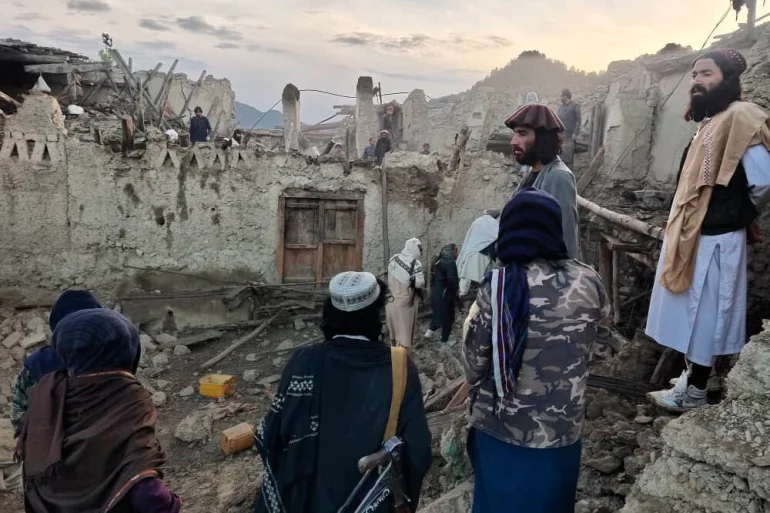By: Stephanie Fu
In the early morning of June 22, a devastating earthquake hit Paktika in Afghanistan, wiping out entire villages and killing hundreds of people.
According to an article by New York Times’s reporters Christina Goldbaum, Safiullah Padshah and Kiana Hayeri, the earthquake was the deadliest one to hit Afghanistan in two decades. Residents of Geyan, one of the hardest-hit districts in Paktika, were forced to evacuate destroyed homes and spend the night in freezing weather, some even in rain or snow. Many were left to build temporary tents and salvage supplies from the rubble.
People lost family members to the deadly earthquake. Explained in the article, Afghan officials in destroyed areas estimated 1,000 deaths, but the United Nations humanitarian office guessed 770 deaths and 1,440 injuries.
New York Times’s journalists Christina Goldbaum, Safiullah Padshah and Kiana Hayeri traveled to destroyed villages in Geyan District along Afghanistan’s mountainous border with Pakistan, which was one of the most severely affected by the huge earthquake. Journalists Christina Goldbaum and Safiullah Padshah wrote in the New York Times article “Need for Aid Is Critical in Afghanistan After Devastating Earthquake,” the cars on the mountain roads were all carrying supplies and food such as bread, rice, flour and blankets. Ambulances were also present, treating injured people who could not make it to hospitals.
Even with the support given by international organizations and local aid groups, the remoteness of the destroyed areas in the mountains obstructed the efforts made to aid the affected areas. The steep mountain roads, downhill slopes and treacherous terrain makes it difficult for people to rush to the villagers aid with the speed that is necessary.
The poor-conditioned mud-brick homes only shows how difficult it was for people in the villages to survive before the earthquake hit as many struggled to feed even their own families by gathering and selling fruit like apricots, apples and pine nuts, while others worked in daily wage labor. According to the article, many made no more than 5,000 afghanis a month, equivalent to $55.
Finding money to rebuild entire homes became a major problem for many families after the earthquake. Aid organizations and the Taliban government’s Ministry of Rural Rehabilitation and Development distributed base of flour, rice and blankets from trucks that had traveled more than 24 hours from Kabul, the Afghan capital. The impact and aftermath of this devastating earthquake could be seen everywhere in the crumbling buildings.
But what made the earthquake so deadly? According to the reporters in the article, the earthquake had a measured magnitude of 5.9, which is considered moderately strong. According to the article, and average of about 1,300 quakes of similar strength strike around the world, attracting little attention because of few deaths.
On the contrary, reporters in New York Times’s article stated that the earthquake that struck Afghanistan surpassed 1,000 on the death toll. This earthquake was so much more deadly because it struck in the middle of the night, which meant many people were asleep in their houses. During the day, people could be in offices or schools, which usually have higher quality construction than the mud and brick homes. The fragile houses easily broke under the violent shaking of the earthquake.
Link to Article: Need for Aid Is Critical in Afghanistan After Devastating Earthquake – The New York Times (nytimes.com)











